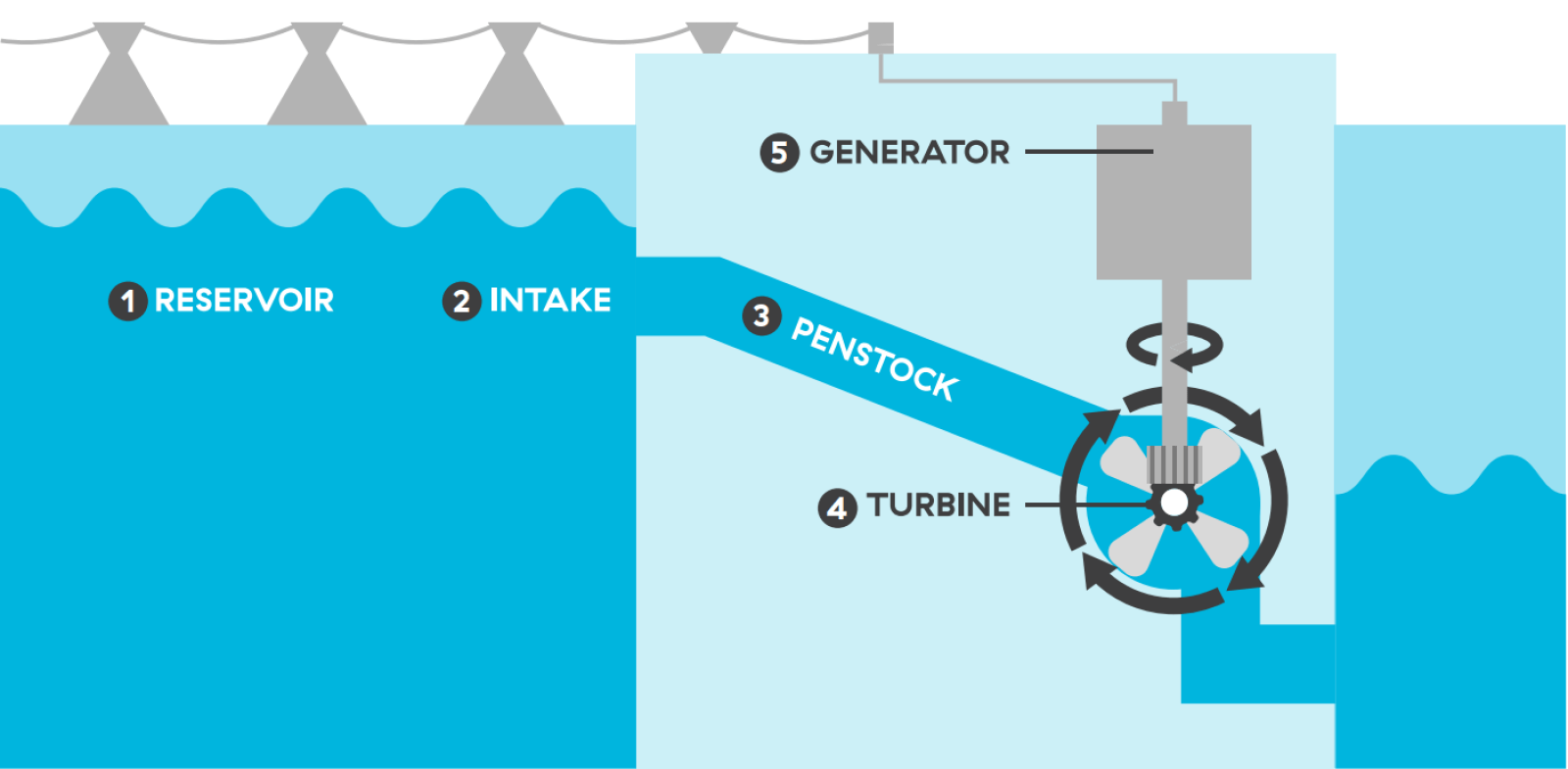Energy
The physics of a hydroelectric dam
Which part of the dam has the greatest impact on its power output?

Overview
Students examine how the power-generating mechanism of a dam can be seen as a collection of input variables leading to an output result—the power generated by the dam. Using this understanding, students rank the input variables according to their relative impacts on the output power.
Instructions
What you'll need
- "The physics of a hydroelectric dam" handout , one or two for each group
- "Ranking the variables" worksheet, one for each student
- "Teacher’s guide" handout
- Organize your students into small groups (2-4 students) and provide each student with a copy of the "Ranking the variables" worksheet.
- Briefly review the general processes that generate useful energy from falling water, highlighting the four main variables that influence power output.
- Invite groups to suggest connections among the four main variables of the dam and the energy it generates. Encourage students to consider Newton’s laws, kinematic equations, and mathematical thinking.
- Guide your students’ attention to the second page of the worksheet, and ask them to now develop an initial conjecture about the relative impact of each input variable on the amount of electrical power generated by the dam. Prompt groups to note their rankings and thinking on the worksheet.
- Encourage groups to share their rankings and thinking with the class. As students share, help them see the relevance of slope in this determining impact. At this time, allow students to share incomplete or inaccurate rankings for they will revisit their initial conjectures later in the activity.
- Provide each group with one or two copies of the "The physics of a hydroelectric dam" handout. Briefly explain that the challenge of this activity is to determine the relative impact of each input variable on the power output of a dam.
- Ask groups to carefully consider the information on the handout, then rank the impact of each input variable. Prompt groups to note their rankings and justifications in the “Thinking after considering the physics” section of the worksheet. For more information on how the variables might be ranked, please see the "Teacher's guide".
- Invite groups to share their rankings and thinking with the class. As students share, ask students if a ranking of the variables appropriate at all? Why or why not?
Modify or extend this activity
Extension
- Invite your students to suggest how the force of friction might affect the rankings.
- Invite students to determine how recent upgrades made to hydroelectric dams in the province may have impacted the energy output.
Modification
- Provide support for the students in understanding the example in the handout by “walking through” each step of the problem and related formulae.
Curriculum Fit
Physics 11
Big ideas
- Forces influence the motion of an object.
Content
- Horizontal uniform and accelerated motion
- Contact forces and the factors that affect magnitude and direction
- Mass, force of gravity, and apparent weight
- Newton’s laws of motion and free-body diagrams
- Balanced and unbalanced forces in systems
Curricular competencies
Questioning and predicting
- Demonstrate a sustained intellectual curiosity about a scientific topic or problem of personal, local, or global interest
- Formulate multiple hypothesis and predict multiple outcomes
Processing and analyzing data and information
- Experience and interpret the local environment
- Seek and analyze patterns, trends, and connections in data, including describing relationships between variables, performing calculations, and identifying inconsistencies
- Use knowledge of scientific concepts to draw conclusions that are consistent with evidence
- Analyze cause-and-effect relationships
Evaluating
- Consider the changes in knowledge over time as tools and technologies have developed
- Consider social, ethical, and environmental implications of the findings from their own and others’ investigations
- Assess risks in the context of personal safety and social responsibility
Applying and innovating
- Contribute to care for self, others, community, and world through individual or collaborative approaches
- Contribute to finding solutions to problems at a local and/or global level through inquiry
- Implement multiple strategies to solve problems in real-life, applied, and conceptual situations.
- Consider the role of scientists in innovation.
Communicating
- Communicate scientific ideas and information, and perhaps a suggested course of action, for a specific purpose and audience, constructing evidence-based arguments and using appropriate scientific language, conventions, and representations
Assessments
Throughout the activity, assess your students’ abilities to:
- Use Newton’s laws, kinematic equations, mathematical vocabulary, and other scientific concepts to describe real-life systems
- Use the provided definition of “impact” to develop rankings of the variables
Teaching Notes
Electricity and magnetism are not discussed in this activity.






